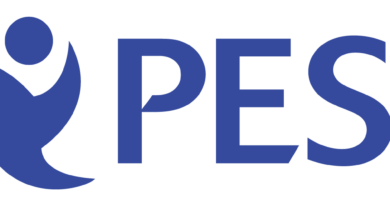Sleep Oura Courts series $800M in New Investment Capital With Biometric Ring

Sleep technology company Oura Health announced today that it has raised $100 million in a Series B funding round, bringing its total investment to over $800 million. The round was led by venture capital firm Kleiner Perkins and European venture capital firm Atomico, with participation from existing investors Founders Fund, True Ventures, and growth-stage venture firm Emergence Capital. The new funding will be used to fuel the company’s mission of making sleep tracking data accessible to everyone. Oura has developed a biometric ring that tracks sleep cycle metrics such as heart rate variability and temperature — metrics which are believed to have predictive capabilities for helping people better manage their health. The device is already in use by thousands of professional athletes, including Olympic gold medalist Chloe Kim and NBA star Kyrie Irving. With the new influx of investment capital, Oura plans to expand its reach even further by focusing on consumer education around sleep health and increasing availability of its products worldwide.
What is Oura?
Sleep Oura is a new sleep and recovery monitoring system that uses a biometric ring to track your sleep patterns, recovery progress, and activity levels. The system then provides you with personalized feedback and recommendations to help you optimize your sleep and recovery.
What does Oura do?
Oura is a ring that tracks your sleep and activity data to give you a complete picture of your health. It uses sensors to track your heart rate, body temperature, and sleep cycles to give you detailed insights into your sleep quality. It also tracks your steps, calorie burn, and activity level to help you better understand your overall physical activity.
How much money did Oura raise?
According to Crunchbase, Oura Health Inc. raised $103 million in Series B funding on February 12th, 2020. The round was led by Causeway Media Partners, with participation from new investors such as Great Point Ventures, luminaries such as Magic Johnson, and previous backers like Y Combinator Continuity Fund and Initialized Capital.
Oura’s mission is to empower people to sleep better and optimize their health. The Oura Ring is a sophisticated wearable that continuously measures key physiologic signals to give actionable insights into how you’re sleeping, recovering and preparing for the day ahead.
What do investors say about Oura?
Some investors are impressed by Oura’s technology and potential to disrupt the sleep industry. “Oura is one of the most promising companies in the digital health space,” said one investor. “Their team has a deep understanding of sleep and how to measure it, and they’re constantly pushing the envelope on what’s possible.”
Others are excited about Oura’s business model and growth potential. “What Oura is doing is very unique,” said another investor. “They’re addressing a huge market opportunity with a product that people are really passionate about.”
Still others believe that Oura has what it takes to be a major player in the wearable device space. “Oura has the potential to be a real game-changer in the wearables market,” said one investor. “Their technology is extremely advanced, and they have a strong vision for where they want to take the company.”
How will Oura use the new investment capital?
Sleep Oura courts $M in new investment capital with biometric ring.
1. How will Oura use the new investment capital?
Oura will use the new investment to continue building and improving our product, as well as to support our growing team. In addition, we’ll be able to invest in more research and development to further our mission of helping people sleep better. Ultimately, this means that we’ll be able to bring our product to even more people and help them improve their sleep health.
What are the risks and challenges associated with Oura?
There are several risks and challenges associated with Oura. First, the company has yet to achieve profitability, which means that it may not be able to sustain itself in the long-term. Second, Oura faces stiff competition from other wearable tech companies, such as Fitbit and Apple. Third, there are concerns about data privacy and security, given that Oura collects sensitive personal data. Finally, Oura’s reliance on hardware makes it vulnerable to obsolescence if newer and more advanced technologies emerge.
Conclusion
The Sleep OURA Courts series is the latest example of how biometric rings are taking off in the tech world. With its innovative technology and $800 million investment capital, OURA is well-positioned to become a leader in this growing market as it continues to expand its offerings and reach new users around the globe. Biometric technology has already made waves in other industries such as healthcare, finance, and security and with their latest breakthroughs with the sleep tracking ring, it will be interesting to see what kind of impact they have on people’s lives going forward.



